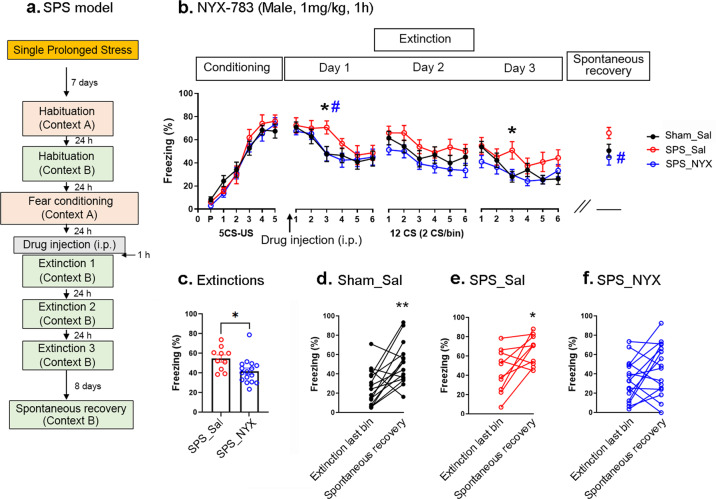Fig. 2. NYX-783 facilitates extinction and inhibits the spontaneous recovery of learned fear in an SPS mouse model of PTSD in male mice.
a Schematic illustration of SPS and the fear-conditioning paradigm. NYX-783 (1 mg/kg; i.p.) treatment significantly reduced the % freezing in SPS-subjected mice in extinction trials and significantly inhibited spontaneous recovery compared with that in the SPS-vehicle (SPS_Sal) group. b Percentage of freezing in male mice after fear conditioning, extinction (day 1, day 2, day 3), and spontaneous recovery trials. c Average freezing percentages of extinctions. d–f Within-group comparisons of male mice. d Black closed circles indicate saline without SPS stress before fear conditioning (Sham_Sal). Red open circles indicate the saline group with SPS stress before fear conditioning (SPS_Sal). Blue open circles indicate the NYX-783-treated group with SPS stress before fear conditioning (SPS_NYX). n = 10–17 mice per group. b Conditioning and extinction: two-way ANOVA with Sidak’s multiple comparisons post hoc test. Spontaneous recovery: one-way ANOVA, Dunnett’s multiple comparisons post hoc test. *Comparisons between Sham_Sal and SPS_Sal, #Comparisons between SPS_Sal and SPS_NYX. *,#p < 0.05 c unpaired two-tailed t test d–f paired two-tailed t test *p < 0.05, **p < 0.01. All the data are expressed as mean ± SEM. SPS single-prolonged stress, P preconditioned stimulus, CS conditioned stimulus, US unconditioned stimulus, Sham_Sal Sham_Saline, SPS_Sal SPS_Saline, SPS_NYX SPS_NYX-783.

